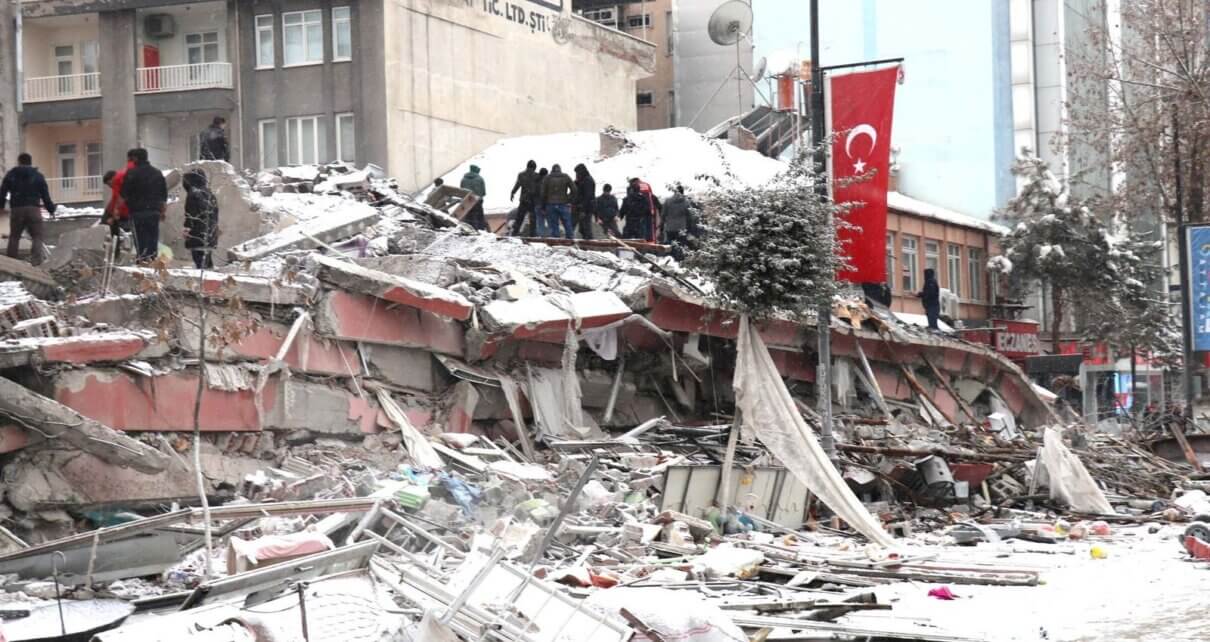A 7.8 magnitude earthquake ruptured northern and western Syria alongside Turkey on Thursday, Feb. 16. According to France24, the total death toll thus far includes upwards to 41 thousand people and counting throughout the two regions, making this the deadliest earthquake in Turkey since 1939.
The earthquake was felt as far as Egypt through Cyprus, and broadly through to Anatolia. Since the event, large rescue efforts have been hindered by ongoing winter storms and frequent drops in temperatures, heightening the risk of hypothermia and total mortality.
According to Reuters, it is estimated that the earthquake caused $84.1 billion dollars in damages, making the catastrophe the fourth most expensive earthquake on historical record.
According to the New York Times, there are an estimated 35 thousand deaths, 5,600 buildings destroyed, and 150 thousand left homeless. Numerous historical sites were also damaged, including the Gaziantep Castle and the Şirvani and Liberation Mosques.
According to the New York Times, the death toll is 5,000 in Syria as a direct cause of the quake. The Afrin Dam also suffered damages and cracks, according to the Associated Press. The Syrian American Medical Society president released a press statement announcing that emergency rooms throughout the country have reached maximum capacity.
In other countries such as Lebanon, residents were awakened by shaking buildings as far as Beirut. Buildings spanning from Ashdod, Israel, Nicosia, and Cyprus were damaged, and the European-Mediterranean Seismological Centre stated that the shake was felt throughout Armenia, Egypt, Palestine, Georgia, Greece, Iraq, Jordan, and parts of Russia.
Turkey’s President Recep Tayyip Erdoğan, when speaking to the press, stated, “…search and rescue teams were immediately dispatched” concerning the affected areas. On Feb. 7, Erdoğan announced a three-month state of emergency in 10 provinces alongside a tier four alert level to form a cohered effort in receiving international aid. 53 thousand responders were deployed over the following days, but negative impacts from weather such as rain, snow, and freezing temperatures have halted and postponed certain operations in rescuing civilians.
Within Turkey, mosques are being used as shelters for those who are unable to return to their homes, alongside several shopping malls, stadiums, schools, and community centers that are now being used to house those who have been displaced.
The Syrian government petitioned UN member-states through the International Committee of the Red Cross and other organizations for humanitarian aid alongside the European Union’s Civil Protection Mechanism. The United Kingdom and the U.S. State Department released statements noting that they would use available and incoming humanitarian aid deployments on the ground in Syria. According to the UN Office for the Coordination of Humanitarian Affairs, numerous logistical obstacles have made it difficult to mobilize international aid across the borders for both countries.
Tom Rosta, a junior anthropology and political science student at Monmouth, noted, “Look, natural disasters can’t be avoided, especially earthquakes. What we can control is how severe the after effects of the situation are. The responses of the people of Turkey and Syria to keep on going on in the face of this disaster sets an example for all of us to follow, and I think that’s what we should be taking from this. Not the climbing death toll or the earthquake itself, but the people and how they have come together to save their fellow countrymen.”
Claire Gaston, a junior political science student at Monmouth, said, “It’s sad, but it kind of shows how the world can come together; but, the world should always be there. It takes a tragedy for the world to come together and I think that’s sad. When natural disasters hit, other countries will help but we should be helping each other even in times of non-distress.”



